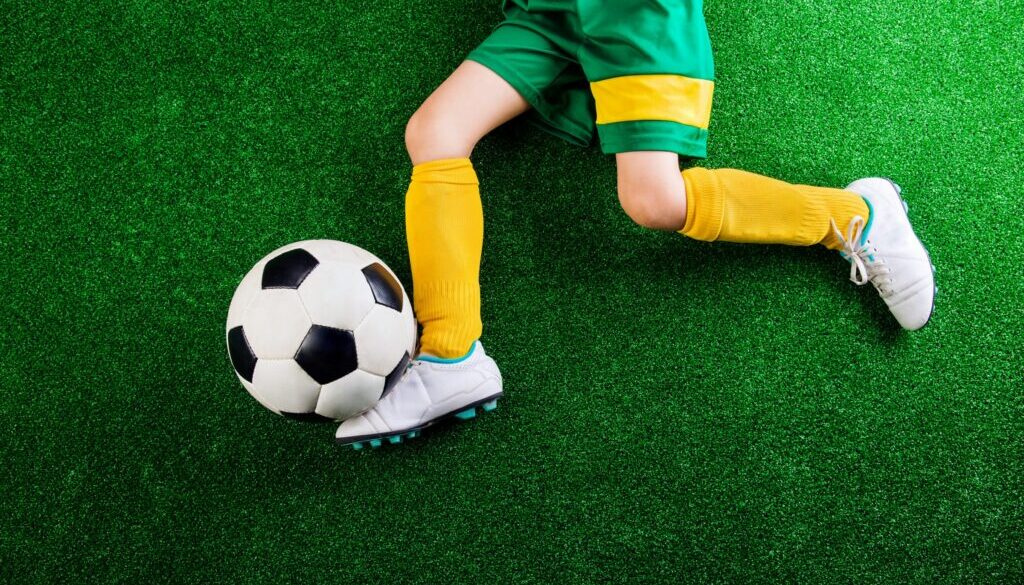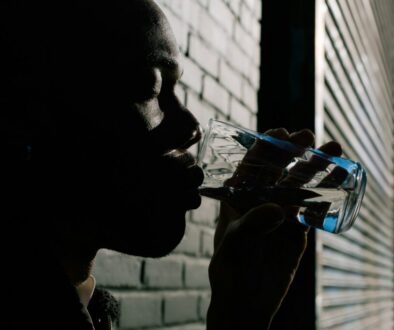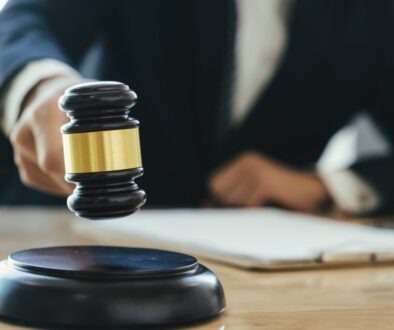As the world heats up, so does the debate around artificial turf
By Carmela Guaglianone
Artificial turf carpets athletic fields, playgrounds, and residential lawns across the US, offering a low-maintenance alternative to natural grass that always looks lush and doesn’t require heavy watering. But while this popular synthetic material is marketed as eco-friendly, it has also long attracted controversy – for decades, environmental and health advocates have expressed concern about the chemical byproducts of the turf’s plastic fibers.
Now, as climate change drives global temperatures to searing new records and cities scramble for ways to cool down, the old debate around artificial turf has taken on a new intensity. Along with concerns about toxic chemicals, some have begun to sound the alarm that artificial turf simply gets too hot in a world of ever-harsher heatwaves, exacerbating the health risks of the climate crisis.
Medical experts, like those at the Mount Sinai Children’s Environmental Health Center, have begun to recommend against artificial turf installations, often citing several health concerns — including “a very real risk of burns, dehydration, heat stress, or heat stroke.”
And the safety risks of hot turf go beyond the immediate, said Genoa Warner, an environmental toxicologist at the New Jersey Institute of Technology who has researched artificial turf and other plastics.
“You might have heard like not to microwave your plastics, not to leave your plastic water bottle in the car to heat up and be exposed to the sun because it’s more likely to leach chemicals into it,” she said. “It’s basically the same principle as applying with artificial turf.”
In part due to concerns that artificial turf is only adding to Los Angeles’ heat struggles, city councilmembers this spring proposed that the city begin to transition away from artificial installations, joining a growing list of cities around the country that have taken steps to ban the material.
In late June, the council’s Energy and Environment Committee approved the motion, which seeks to gather information on the impacts of turf and could ultimately lead to a ban.
Toxic chemical concerns
The use of plastic as a domestic product erupted in the post-war United States, with products such as plastic food storage containers marketed to homemakers. As polyethene iterations of everything became more and more popular, the all-American front lawn was a natural target.
Artificial grass sprang onto the market in the 1960s, with manufacturers advertising it as a low-maintenance substitute that could be used year-round, even in rainy weather. At first artificial turf was found in professional athletic stadiums, then in school athletic facilities. Eventually, this synthetic grass emerged as a landscaping technique in the dry, sparsely vegetated southwestern United States.
As of 2019, there were over 12,000 artificial turf fields in the US, with 1,200 to 1,500 more being constructed each year. By 2021, the global market for artificial turf had reached over $8 billion.
But even as artificial turf has been embraced by homeowners and athletic facilities, environmental advocates have long criticized the product, worrying about exposure to harmful chemicals including polycyclic aromatic hydrocarbons (PAHs), phthalates, and metals that may leach from the material.
Several studies have shown artificial turf can contain alarming levels of per- and polyfluoroalkyl substances (PFAS), a class of synthetic chemicals commonly used in consumer products that build up in the environment and our bodies. PFAS are toxic and have been linked to a slew of health risks, including cancers and reproductive issues.
Artificial turf can’t be recycled, so large swaths of plastic — 40,000 lbs in the average athletic field — often end up in landfills when it’s lifespan runs out. There, turf leeches more chemicals and emits dangerous greenhouse gasses.
Astroturf, a popular artificial turf manufacturer, states on its website that the product is “not a major source of PFAS exposure” and that the company “plays a vital role in conserving water” in drought-stricken California.
Hotter than concrete
But even companies that insist artificial turf is safe may have a hard time arguing it can handle the worsening heat.
Synthetic grass has been shown to heat up 20-50° F more than natural grass, which keeps relatively cool when its blades release water vapor as temperatures climb. In one study by the San Francisco Estuary Institute, a synthetic field in Silicon Valley’s Sunnyvale, California registered a peak temperature of 138 degrees on a 108-degree day.
On a scorching day, artificial turf can get hot enough to melt shoes and blister hands and feet.
Susan Hinton, a plastics pollution prevention advocate with the Loma Prieta Chapter of the Sierra Club, has taken up a habit of holding an infrared thermometer to artificial turf fields and residential lawns on hot days to test its temperature. Her community, in Santa Clara County, is one of many across California that are considering or currently implementing bans on the product following a 2023 bill allowing the move.
Hinton has measured the turf at temperatures between 150 and 180 degrees on warm summer days, she said.
“Architects have considered artificial turf to be a kind of hardscape,” said Hinton, putting the material in a category with stone, wood, and other non-living landscape design elements. “It’s like pouring concrete over your yard. From a heat standpoint, concrete actually gets less hot.”
Experts have suggested that artificial turf contributes to the urban heat island effect, a phenomenon in which urban areas experience higher temperatures than their surroundings. In the daytime, this effect can increase temperatures by between one and seven degrees, with a slightly lesser effect at night. One 2010 study from the University of California, San Diego, found that replacing grass with artificial turf could increase the urban air temperature by 4 degrees Celsius, or more than 7 degrees Fahrenheit.
Searching for solutions
Turf manufacturers have attempted to offer cooler options to mitigate the impact of heat on use and the environment. Plant based infills, the filler that settles at between the blades of artificial grass, has been one such solution — using walnut husks or olive pits in place of tire crumb rubber.
“The synthetic turf industry takes our commitment to the safety and quality of our products extremely seriously,” said Melanie Taylor, President and CEO of the Synthetic Turf Council, the industry trade group.
But some of those solutions have fallen short.
To cool turf down, retailers suggest watering it – but that effectively blunts much of the lauded water savings from the installation and provides only a temporary solution to the dangerous temperatures of the turf’s surface.
And in Columbia, South Carolina, a public school district sued the contractors responsible for their artificial turf field in 2023 for negligence after an infill that supposedly reduced the temperature of the field failed to do so effectively.
The hotter artificial turf gets, the more likely PFAS and other potentially harmful chemicals are to end up in the environment.
“I think of it as the Cat in the Hat’s problem with his spot. There’s the pink spot, and it just sort of goes from one place to another. In the Cat in the Hat, it magically disappears through the alphabet,” Hinton said. “But in the real world, you know, there is no magic, it just goes into the environment.”
Utility companies are ultimately responsible for the costly process of filtering those chemicals and microplastics out of the water supply. The Los Angeles Department of Water and Power, the largest public utility company in the area, has started offering rebate programs to transition to natural landscaping, citing water saving as an incentive.
Where rebates aren’t enough, regulations have stepped in.
The East Coast has led the way on anti-artificial turf legislation. New York state has placed a moratorium on new turf while Boston and several other communities in Massachusetts and Connecticut have enacted bans or severe restrictions. Many of the efforts have been driven by revelations surrounding the risk factors of PFAS and other chemicals associated with plastics like those used in fake grass.
In 2022, as concerns over water levels in the Colorado River percolated, Nevada banned all “nonfunctional” turf – fake grass in traffic circles and parking lots that isn’t used for recreation – in the south of the state by 2026.
California legislators outlawed the watering of non-functional synthetic grass in a bill passed last year, a rule the state says saved more than 150,000 acre-feet of potable water, the equivalent of 75,000 Olympic swimming pools. But since watering artificial grass is one of the primary recommendations for keeping it cool, the rule led to lawns releasing more heat into the atmosphere even as it saved water.
Since last year’s ruling to backpedal a 2015 law that prohibited banning turf, municipalities across the state have adopted a mosaic of stricter regulations. Los Angeles City Council’s motion, introduced in the heat of another record-breaking summer, highlights the renewed urgency in confronting the risks of artificial turf in urban centers.
To Warner, the New Jersey Institute of Technology researcher, the need for real, natural grass as a part of city landscapes goes beyond the debate over whether artificial turf is safe.
“We need the green for our health in general and our climate,” said Warner. “It’s worth whatever other sacrifices have to be made in terms of upkeep or athletic activities.”
(Featured image via Unsplash+ in collaboration with Getty Images.)
 EWG
EWG


